Native and cross-platform apps are two types of mobile apps. Native apps are developed for a specific mobile operating system, Android or iOS. On the other hand, a cross-platform app works on several platforms.
These two groups differ in development approach and performance capabilities. So, choosing a mobile app type depends on your business needs and the potential the two approaches offer.
The estimates show that mobile apps are a powerful instrument for business and connecting to a broad user audience. For example, more than half of users prefer mobile apps over responsive websites to make online purchases. This is due to the better experience they get with mobile apps.
In view of this, knowing which way to go in native vs cross platform app development is viable. Should you invest time and resources in building a complex and robust solution? Or better turn to faster development? Codica has extensive experience in building mobile apps. So, our specialists are eager to share their expertise with you.
This article clarifies the dilemma between native and cross-platform apps. Hopefully, it will help you make the right choice for your app project. Let’s dive into it.
Native app: definition, pros & cons, and examples
Native apps are developed mainly for two top systems, namely Android and iOS. Android takes almost 72% of the mobile app market share today, and iOS holds the rest, 28%. See the image below to learn how these forces have hit the market over the years.

If you want to use a native approach for launching an app for both platforms, it is possible. In this case, the vital thing to consider is that this process requires parallel deployment on both platforms. First, you can hire a team specializing in the Android platform. Then you can move to a team that conducts native development for iOS.
A professional development team that creates native Android apps typically uses Java and Kotlin. Meanwhile, for building iOS native apps, the services will involve a Mac computer and Swift language. Also, iOS developers used to apply Objective-C. But today, this language remains for old programs and is almost deprecated.

Pros of native app development
To discover why native apps are widely used, let’s look at their advantages.
High performance and speed
As native apps are adapted for specific platforms, they show excellent performance and speed. This is thanks to several conditions. First, the languages used to write native apps get the full support of the platform’s ecosystems. Second, native apps access APIs and components that help the apps adapt to different screen sizes and system versions.
For example, a performance test showed native apps win compared to cross-platform counterparts. The iOS native apps performed 60% better than those built with Xamarin Native and Xamarin Forms, which is a tool for native or cross-platform development from Microsoft. Android apps scored five times better. Check the image below to see the testing results.
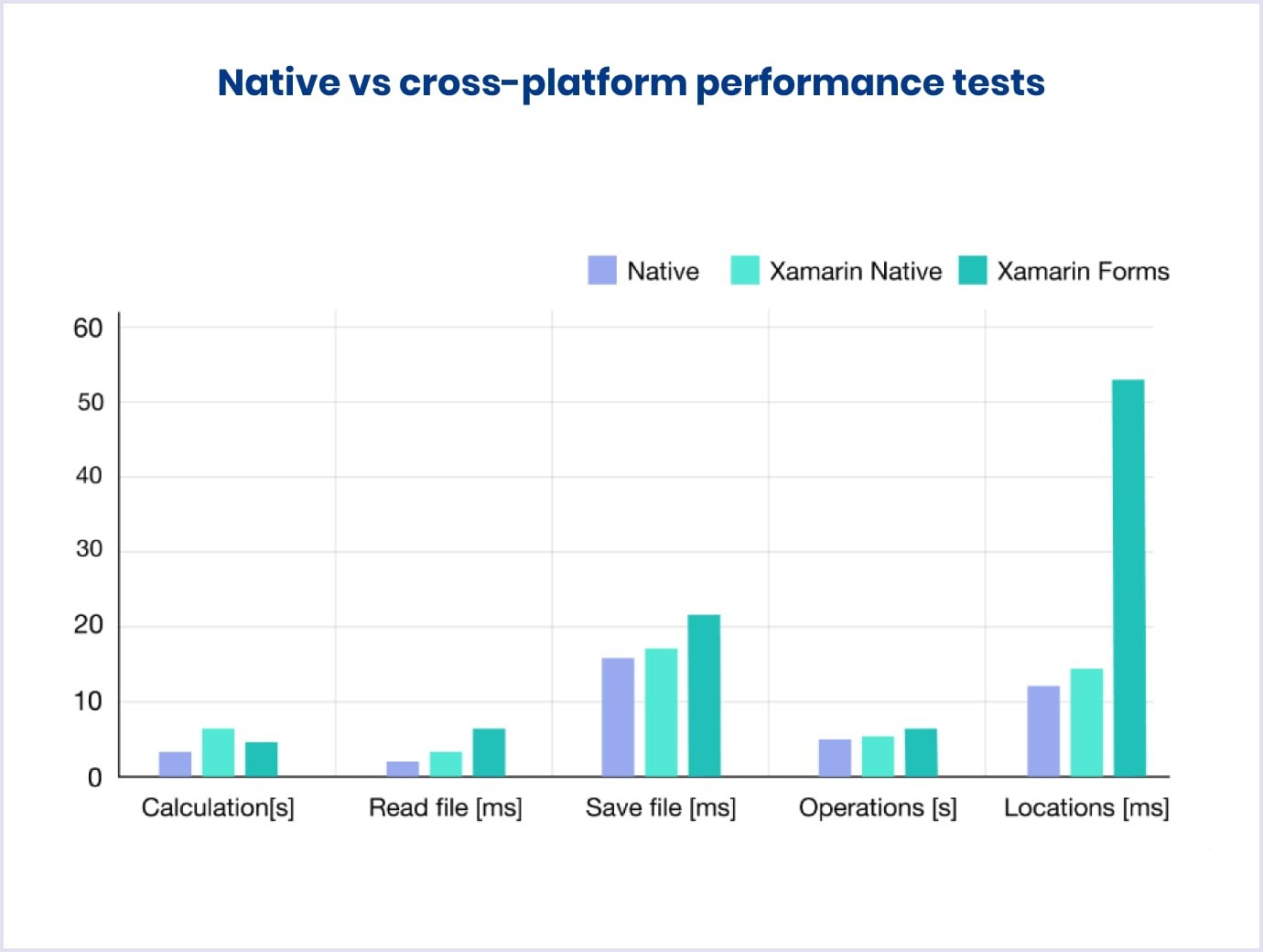
Security
Compared to other types of apps, native applications have enhanced security. This is because different levels of the operating system protect native apps. So, attackers will have a difficult time manipulating apps.
Also, native apps are built using official APIs instead of relying on third-party frameworks. Official APIs are thoroughly tested to suit different system versions.
There is another factor influencing native apps' security. It is the release of software development kits (SDKs) within long time periods. Developers use them to create native apps. Longer rollout time means careful testing and more reliable security checks. This is compared to short-time releases when repairs are foreseen on the go, like in the case of frameworks.
Skilled professionals
Many programmers refined their skills in building apps specific to a particular operating system. With many years of iOS or Android development experience, they know the intricacies of mobile app development services. Developers can advise you on the technical aspects of a native solution, including UX/UI design. So, you will get an app tailored to your customers’ needs.
Scalability
It is easy to tune up native apps because they must be compatible only with one platform. Native projects are entirely separate. Besides, you can use dependency code if you need, which you can apply for different platform versions, both for Android and iOS. Also, you can add new features without restrictions. Such flexibility ensures that native apps are easy to scale.
Access to the device’s hardware
Native apps can take most of the mobile gadget’s hardware, such as a camera, microphone, and CPU (central processing unit), thanks to direct access. Also, this is granted to reliable APIs provided for Android and iOS.
Thanks to such native capabilities, you can customize your native app as you wish. For example, you can change the theme depending on the light in the room, thanks to light sensor access. Or you can use a QR scanner after your app accesses your device’s camera.
The image below shows lenses in the Snapchat mobile app when you activate camera access.

Stability
Google and Apple care about Android and iOS as their premium products. Why does it matter? Because it means stable and long-term support of these systems and native apps, respectively.
The creators of mobile operating systems regularly release new APIs and other updates. These technical tools will help developers provide regular support for native apps. Also, new features are available to developers as soon as they are launched. So engineers can implement them right away.
Intuitive UI/UX design
The native app’s design is uniform for a specific operating system. It means that the app's UI (user interface) and UX (user experience) are familiar to users. Thus, they intuitively will understand how to navigate the app.
Also, it is simple for developers to build native apps relying on specific standards. These standard techniques also include best design practices. So, you can provide UI/UX design services, ensuring a better user experience. Besides, developers can directly integrate native apps with platform features like Google Pay or Siri.
Design is as crucial for an app as its technical parameters. An example of how design can help earn leads is an online marketplace for boats. The client wanted to improve the audience reach with their boat website. So, upon his request, we redesigned the platform.
The changes embraced the UX parts, such as search, product cards, ad creation, and dashboard for advertisers. Thanks to enhancements in flow, our team improved the visibility and accessibility of search and listing ads. We optimized dashboards to provide ad creators with the metrics that help them see their progress. Designers also changed the UI part with stylish photos and a selection of complementary colors per the brand’s identity.
Thanks to such improvements, the platform grew lead generation by 480%. Take a look at this platform’s design for the mobile version in the video below.
Cons of native app development
Along with pros, some downsides prevent businesses from creating their apps as native. What are those drawbacks? Let’s see.
Expensive development
The high cost of native development comes from such apps being created for a specific platform, Android or iOS. Building a particular version means hiring separate teams for each operating system. This will cost more than cross-platform apps. Startups or businesses with tight budgets will find hiring qualified teams costly. So, there are remedies to help save you costs on development:
- Build an MVP;
- Keep the design simple;
- Hire skilled testers;
- Access mobile-specific features;
- Provide regular troubleshooting.
We give you an image below to advise you on how you can reduce the native app development cost.
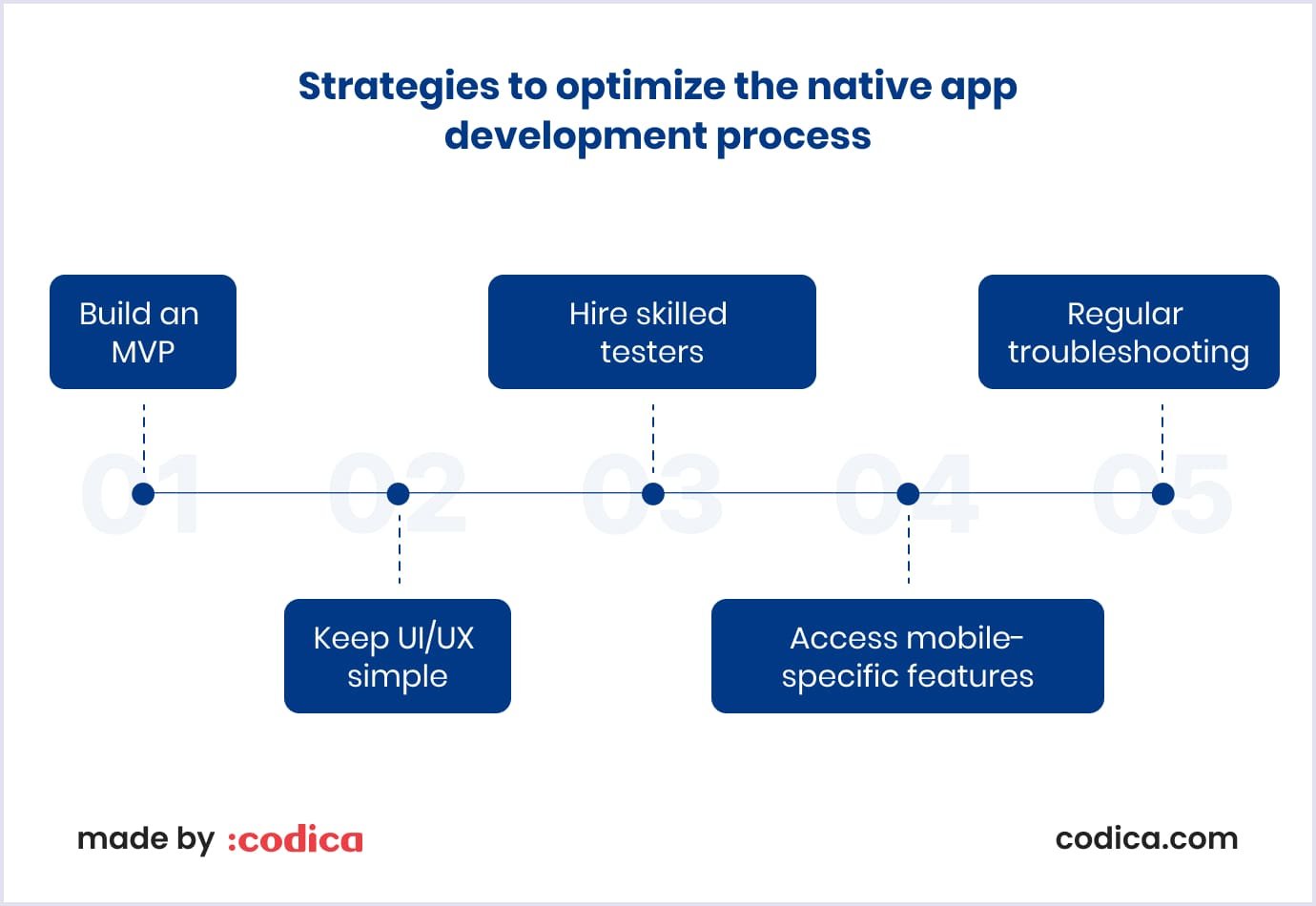
Limited user targeting
As native apps are developed for a specific platform, they cannot be accessed on different devices. For example, the app for iOS can be used on iPhones and iPads. Businesses will need to find out potential customers that use other devices. This means less audience targeting and fewer potential customers.
A solution for this might be developing versions for iOS and Android. But this involves incurring extra costs. If a native app is created for both platforms, its cost can vary from $49,000 for simple apps to $250,000 for complex solutions. So, you can use no-code builders, like Adalo and Shoutem, to create native apps for these platforms. The tools are available for free and with paid packages for advanced features. The paid services range between $45 - $250 per month.
App store restrictions
You can download a native app from an app store. As app stores are crowded, it is challenging to find a specific app. Companies even invest in marketing to make their apps more visible in the app stores. Besides, the app stores impose additional cuts from revenue. For example, Apple takes a 30% commission for app developers, which then drops to 15% in subsequent years. So, companies seeking to maximize their profits will find it challenging.
Need for new downloads
Every minor bug fix or tweak in the app means your users must download the app again. So, it is better to choose a cross-platform app over a native one if you go through quick fixes and deployment.
You may also like: 15 Hot Mobile Application Development Trends for Your Business in 2023
Examples of native apps
Among dozens of native apps available in the Android and iOS app stores, there are prominent samples that are worth noting for their success. Let’s see what they are in more detail.
It is a simple messaging app that is used in many parts of the world. The app includes handy features like voice and video calling, photos, and document sharing. More than two billion people in over 180 countries use this app today. WhatsApp architecture is so perfect that Facebook bought it for $19 billion.
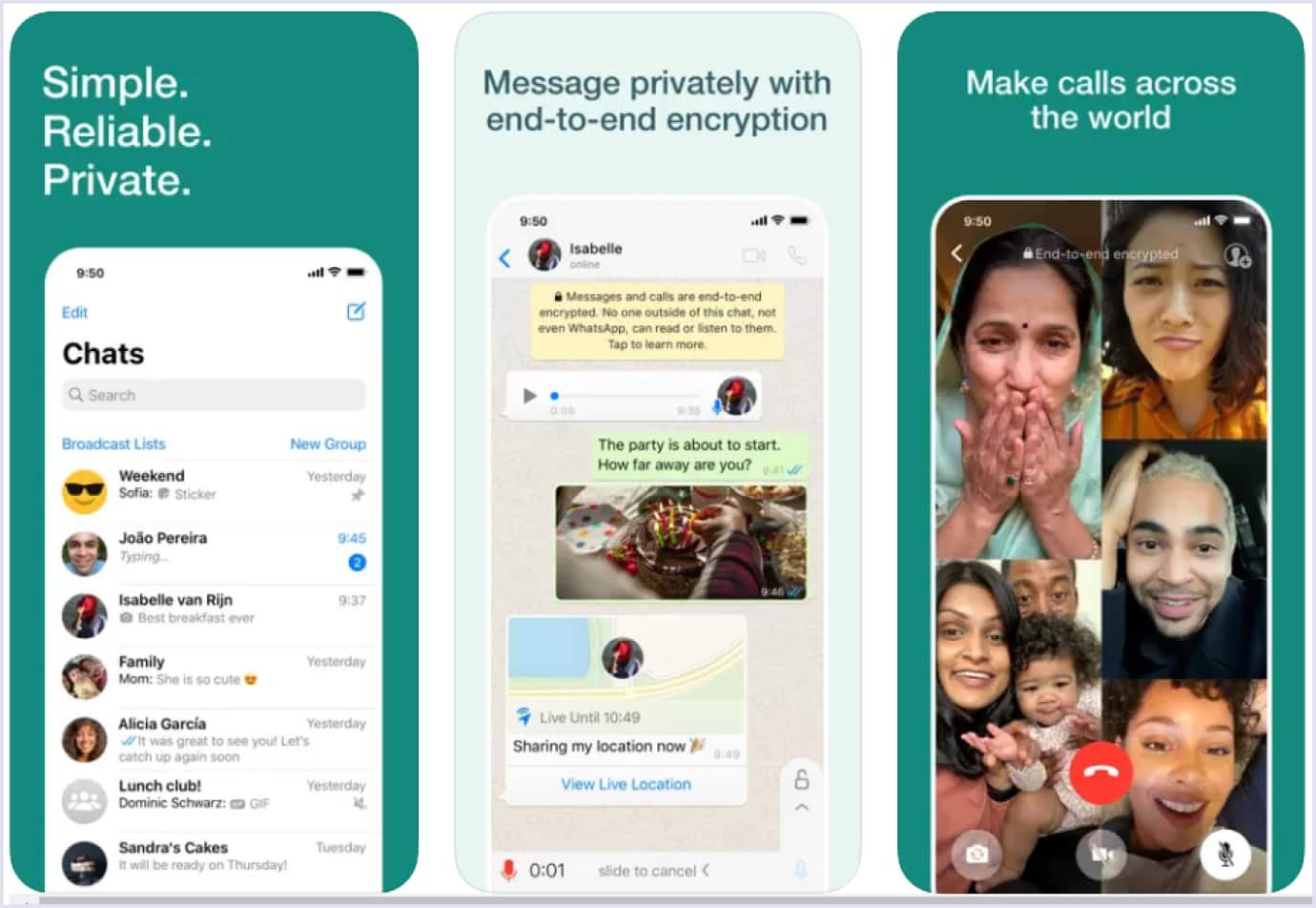
Spotify
This recognized digital music, podcast, and video service is a hub for music lovers. Users can access thousands of digital media pieces from creators worldwide. The team wanted to deliver an equal experience for desktop and web, but that was challenging for the web version. After plenty of discussions, they came up with a single code base approach that could bring an enhanced experience for both app versions.
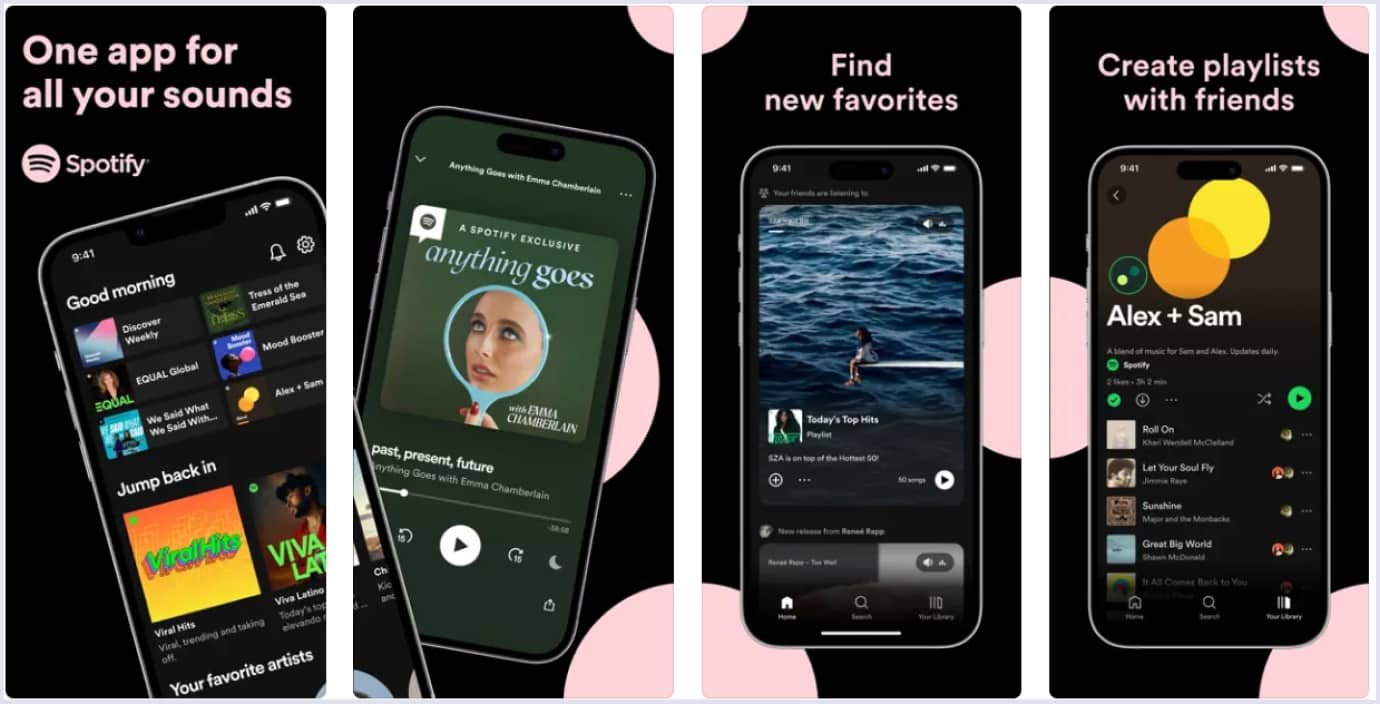
Waze
It is a GPS navigation tool that gained recognition from drivers in many countries. You can use it on mobile devices with GPS support. The app provides turn-by-turn data, route information, and travel time according to the user’s input.
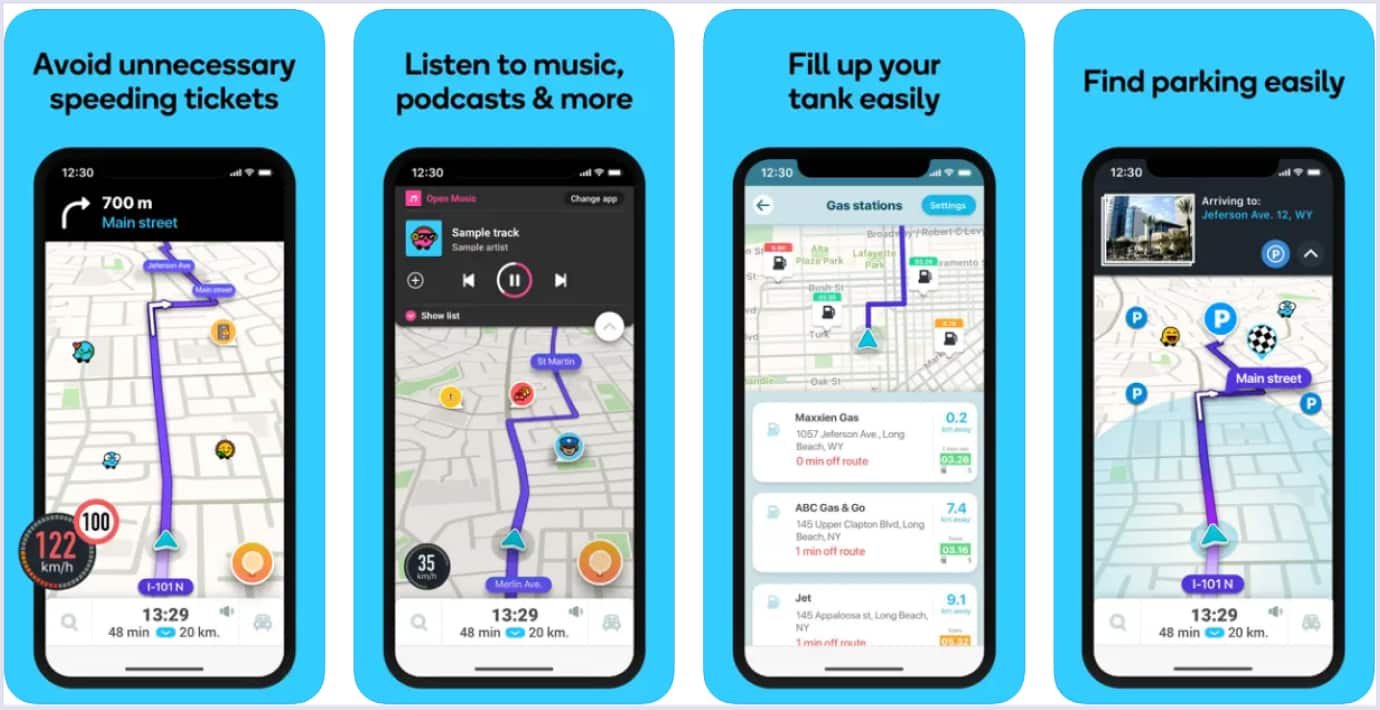
To sum it up, native app development suits complex projects with rich functionality. Also, you can opt for native app development if you need scalability and enhanced security. Yet, consider that these apps require skilled professionals and a relevant budget for development.

Cross-platform app: definition, pros & cons, and examples
A cross-platform mobile app can be used on different mobile platforms. Compared to native apps, they are compatible with many operating systems.
Such an app can work on various platforms with the same code. It means you can roll out your product faster while maintaining high quality. Also, being available across many platforms, the app reaches more users. Hence, you get prospects.
Thanks to less time for development, cross-platform apps appear to be cost-effective. So, they are an excellent alternative for businesses with small budgets.
There are a lot of technologies available for cross-platform development. Let’s discover the two top of them.
React Native. Created by Facebook, this framework earned popularity among developers. According to the Stack Overflow survey, this is one of the leading tools professional developers use for cross-platform development.
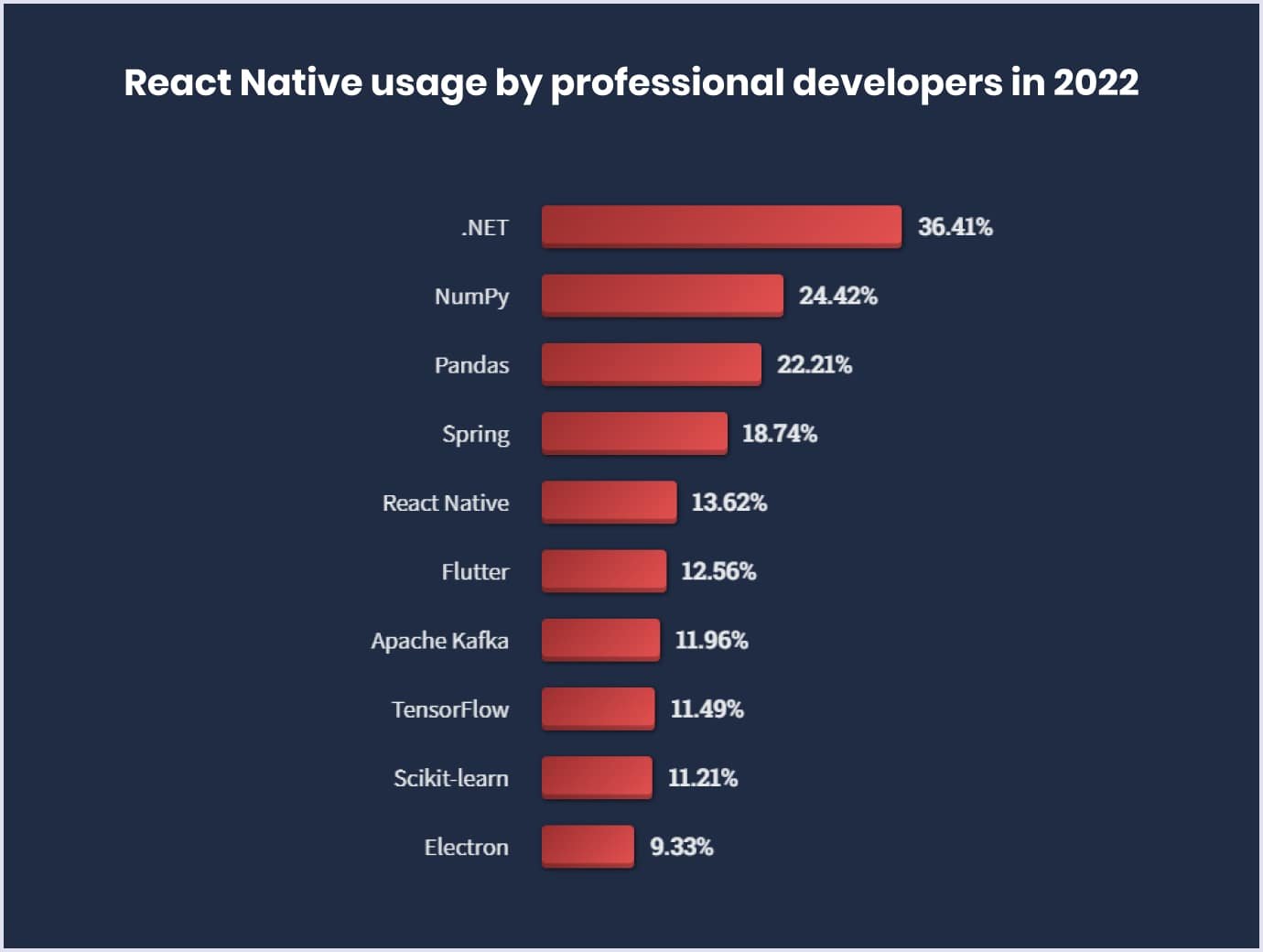
React Native creates polished, smooth, and intuitive user interfaces. The framework optimizes code use leading to faster development and cost reduction. At the same time, it brings quality and functionality equal to those in native apps.
Flutter. It is a technology provided by Google. According to Statista’s survey, 42% of software developers used Flutter in 2021. This software development kit (SDK) allows you to create prime apps on various platforms using a single codebase. Flutter�’s hot reload feature enables you to check app changes without restarting it. Also, Flutter provides material design widgets that help to create sleek app looks that users love. On top of that, this SDK enables you to create an app in many languages. That is why Flutter is a widespread component of the mobile app tech stack.
Pros of cross-platform app development
Cross-platform apps have several advantages, making them highly competitive with native apps. In the image below, we summarized cross-platform development pros.
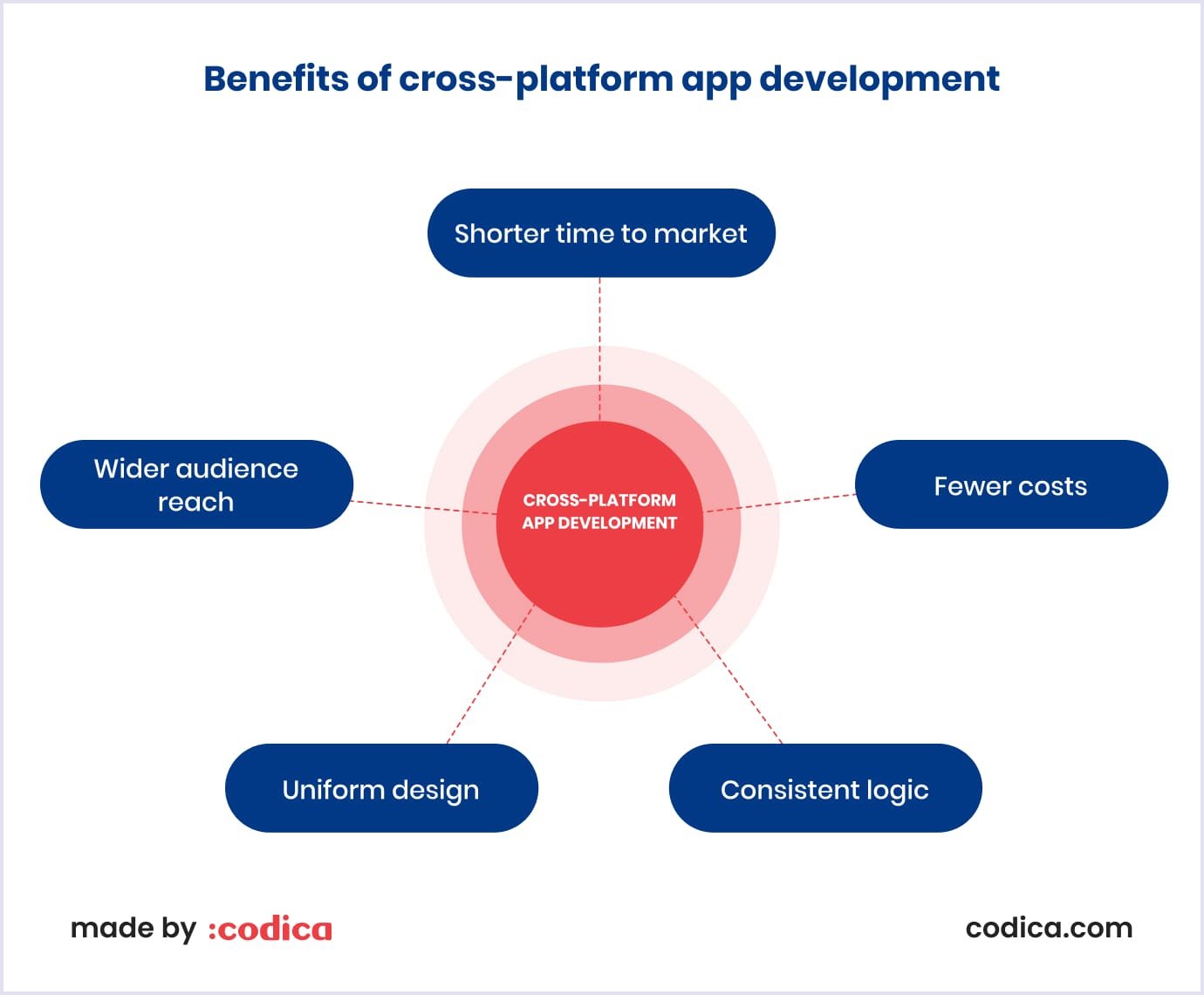
Let’s see what their benefits are in more detail.
Shorter time to market
In building cross-platform apps, developers use a single codebase for different systems. Therefore, you need one team to create a solution across any mobile device. The code is in one place. So you save time and resources in delivering an app to the market.
Fewer costs
You need one team to create a code for a cross-platform app. Developers can reuse big code fragments and other tools to adapt the app to different operating systems. This approach requires fewer costs for app development and testing. According to a survey, cross-platform development is 30% - 50% faster than native. Thus, you save your budget from unnecessary expenses.
Consistent logic
Cross-platform code has the logic enabling the app to perform similarly on various platforms. You can reuse the cross-platform code on different operating systems. This helps avoid bugs and errors and easily make changes to the code without putting double effort. Moreover, such code contains fewer discrepancies making the app work stable.
Uniform design
While performance is crucial for an app, its user experience (UX) and user interface (UI) also matter greatly. They ensure that users will like and use your app. Thanks to using single code in different operating systems, the UX/UI of cross-platform apps is similar. So, your brand identity will be visible across different devices.
Wider audience reach
Creating an app for many platforms implies that it can be used across many devices. This means your cross-platform app will reach a wider audience than an app built only for one platform. There are an estimated 3.3 billion Android users, and 1.36 billion people use iPhones. So, you gain a wider pool of users, raising chances for higher profit.
Cons of cross-platform app development
As cross-platform apps bring businesses benefits, there are also certain commercial risks. Below we discuss them in more detail.
Lower performance
If we compare a native app and a cross-platform one, the first will win in performance. This is because cross-platform apps are created with open-source frameworks. Such tools are less optimized for a particular platform than programming languages used to create native apps. For example, a survey showed that cross-platform apps have twice as high memory consumption as the native app. Below is a comparison of a native app and apps built with cross-platform tools Ionic, Cordova, and React Native.
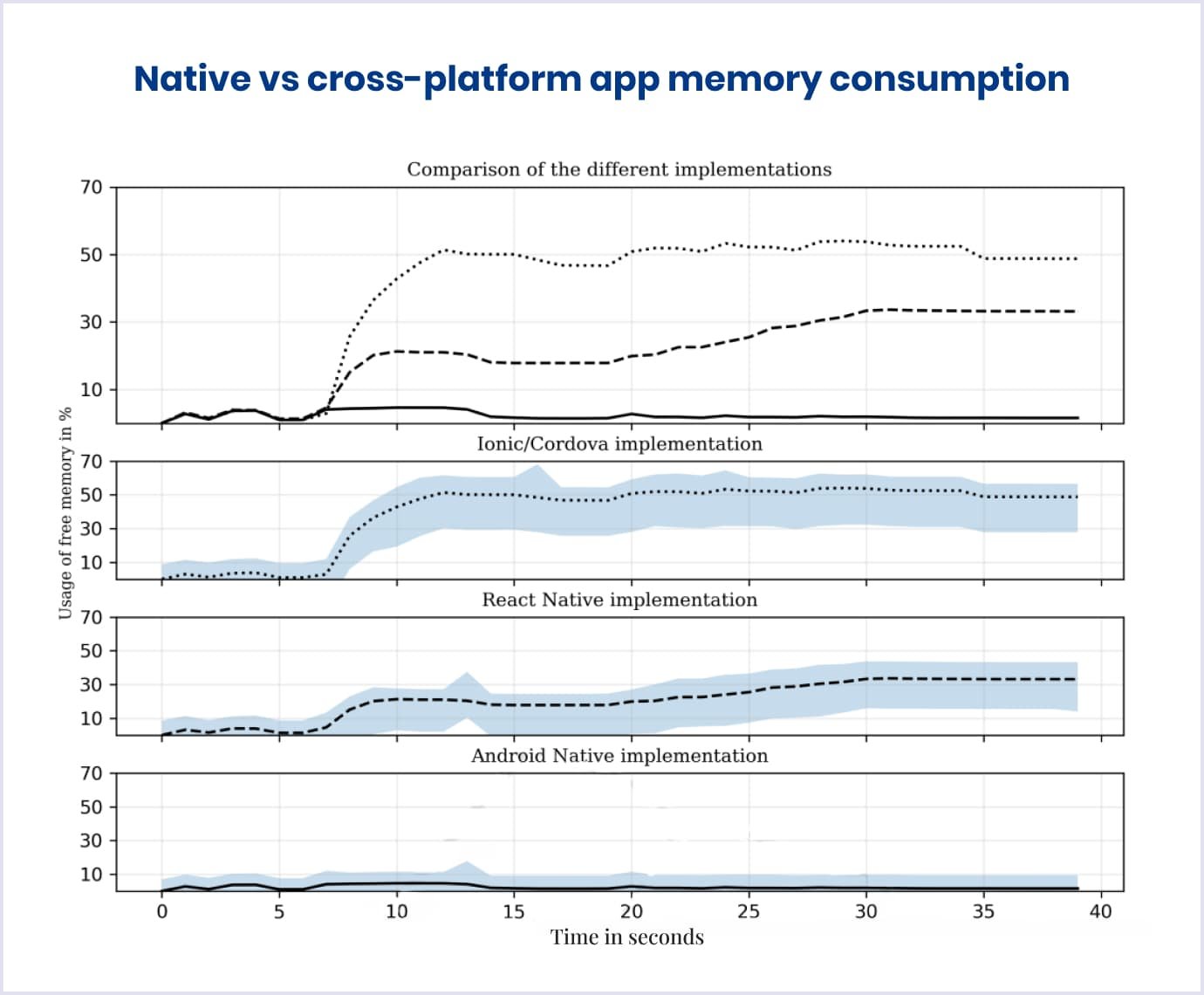
Need for code adaptation
Cross-platform apps are created to be one-size-fits-all. This gives developers a hard time as they must adapt the apps to various platforms with certain specifics. For example, iOS has no return to home or back button in search, unlike Android. That’s because these platforms have different design requirements. So, instead of solving users’ problems, developers remove such discrepancies in cross-platform apps.
Wait time for updates
Every time Google or Apple implements a new feature, the app must align with it. It takes time to wait until the cross-platform app framework gets the relevant update. Compared to this, SDKs for native apps are provided with necessary updates faster.

Examples of cross-platform apps
Among a vast pool of cross-platform apps, we can list a few to show you prominent examples. They are as follows.
Walmart
This giant retail corporation operates hypermarkets and retail stores in the United States. First, the company tried a hybrid app, which is a web app with a native container. As time went on, managing this app became time-consuming and expensive.
So, Walmart shifted to creating a cross-platform one using React Native as the main technology. This helped the company save costs and deliver an excellent user experience with the app. The app provides customers with useful services, such as easy checkout, product returns, or medicine delivery. The video below presents a short grasp of how Walmart simplifies your shopping.
eBay Motors
It is a platform from eBay where you can buy new and used cars and find spare parts for repairing your vehicle. One of the technologies used for building the platform is Flutter. As eBay mentions, the key advantage of using Flutter is faster development and testing capabilities.
The video below presents an interview with Larry McKenzie, engineering lead, talking about the work on the eBay Motors app. He tells about the challenges and solutions they came up with and how Flutter brings benefits.
Native vs cross platform app development: what to choose?
Certain aspects define what approach would be better for your project. The table below summarizes the most crucial of them to help you choose between native vs cross-platform development.
| Parameter | Native app | Cross-platform app |
| Complexity | As the native approach is oriented towards building robust apps, choose this approach if you want to develop an app with complex logic. | The cross-platform method suits simple apps better, as performance is not a concern in this case. |
| Cost | Native app development vs cross platform is more costly. | If your budget is pretty tight, you better pick cross-platform development. |
| Development time | The native method is a better option for projects requiring considerable development time. | The cross-platform approach offers faster development, testing, and deployment. |
| UI/UX design | If you need a customizable UX/UI, native development is a winner. Preset libraries and configured components make creating unique designs with complex graphics easy. | The cross-platform approach offers less sophistication and suits small apps. |
| Security | Native apps have built-in security features that ensure solid encryption and fraud detection. So, native apps win in terms of security compared to the cross-platform approach. | Cross-platform apps are less secure than native apps due to weak debugging tools and challenges for thorough testing. |
Depending on your business goals, you can choose native or cross platform mobile development. Let’s see in which cases they bring more efficiency to projects.
Choosing a native app development
There are few cases when it is feasible to choose this approach. They are as follows:
- Your target audience uses one platform, Android or iOS;
- Your app’s work must be stable despite its complexity;
- Your team is skilled in developing apps for Android or iOS.
In this case, you have two viable options:
- Develop two versions of a native app in parallel. If you choose this alternative, you can earn the audience’s attention faster. But this approach may lead to differences in the architecture and logic of the two apps. So, it may be challenging to maintain and support them.
- Develop two versions one after another. In this case, you can release one app version and see how it performs. Based on users’ feedback and insights from metrics, you can build the second version of your app.
Choosing cross-platform development
On the other hand, the cross-platform approach comes in handy in the following cases:
- You target many platforms with your app;
- You need to save time and costs by creating an app with one codebase;
- Your application has graphics and architecture that allow for using cross-platform frameworks.
Though some downsides exist, cross-platform apps are valuable for their cost-efficiency and resilience. The cross-platform approach fits apps that are independent of hardware components and demanding features. For example, this is the case for augmented reality apps.
Still, if you want to be sure when to use the cross-platform approach, you can ask your technical partner for product discovery. This thorough business analysis will estimate your business needs, opportunities, and risks. As a result, you will know which option to choose, cross-platform or native. Watch the video below to learn more about product discovery.
Codica’s expertise in mobile app development
We have worked on various projects for our clients for over eight years to help their businesses evolve. Our team carefully approaches each project to fulfill the client’s expectations. Thus, we deliver reliable and likable cross-platform solutions with React Native. Making solutions accessible to different users is crucial. That is why the designs of our products are adapted for desktops and mobile devices.
For example, one of our recent projects is a domain name marketplace Dan. The platform needed an overhaul in speed and security. So, we made vital changes to the platform optimization on the Portfolio page and added infinite scroll instead of endless domain pagination. With our updates, users can quickly sort domain names by categories and apply filters for rapid searches.
Also, we added a toolbar for bulk changes. This feature helps to sort thousands of domain names with a simple checkbox menu by pricing, sales, and other options.
Another helpful feature that we added is a calculator. So, users can swiftly and simply calculate domain prices. Below is a mobile version of this domain name marketplace presenting the screen with listed domains.
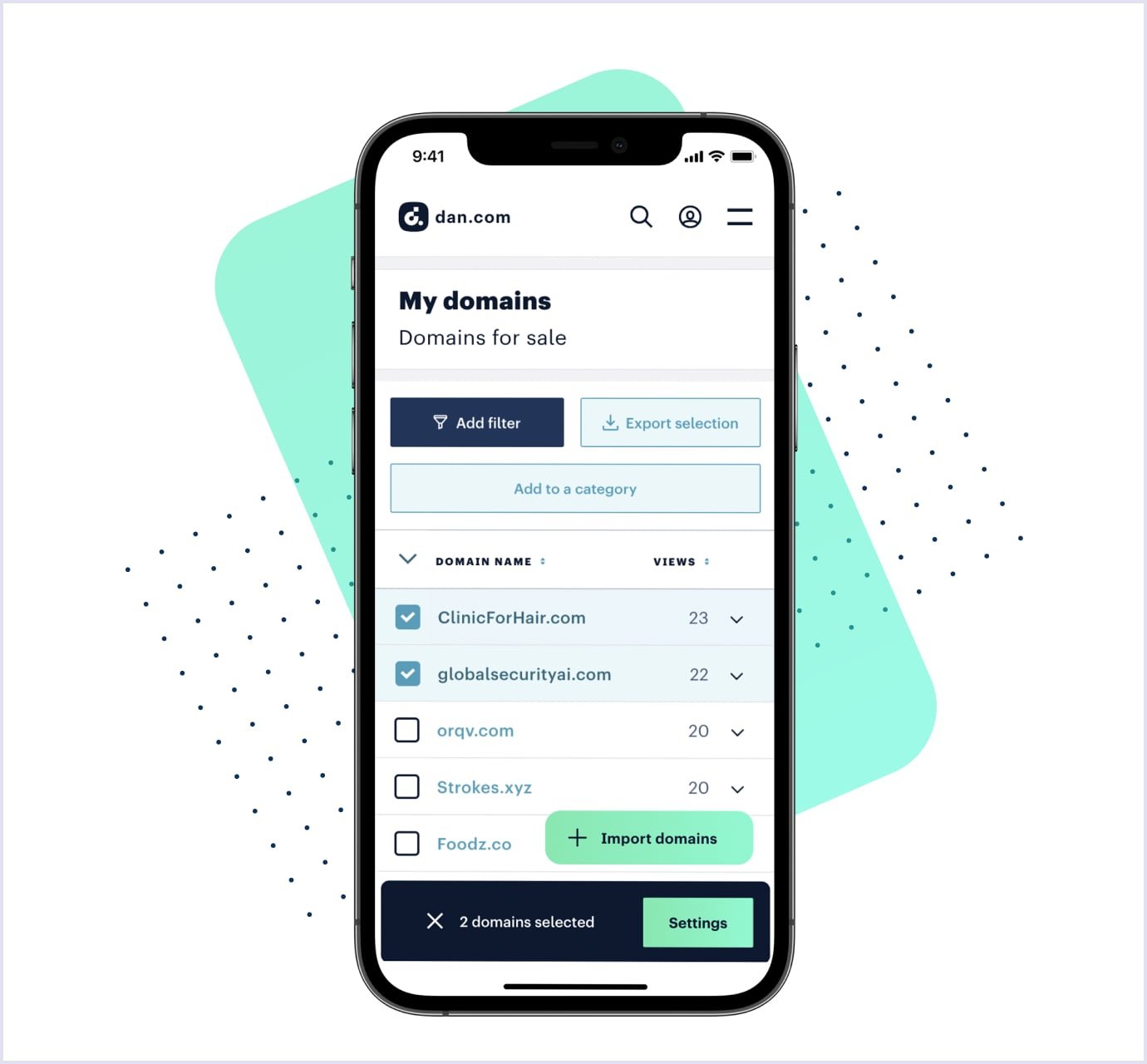
We have more of our projects to share. Check our portfolio to see other mobile versions of the products our team delivered.
Also, you can discover many exciting things about mobile app development in the detailed guide our experts created for you.
Takeaways
If you weigh between native vs cross platform mobile app development, there are aspects you can consider. Native apps are robust, customizable, and secure. Still, they require time and resources for development. Meanwhile, cross-platform apps are fast to deliver. Yet, you must adjust them to new updates from operating systems providers.
If you want to cover the strengths of native and cross-platform apps, you can start with native. Then you can extend small units of your app with cross-platform features. This is a reliable way that is used by prominent companies such as Facebook and Airbnb.
If you have a mobile development project, our expert team is eager to help you with development. Contact us to discuss the details and quote for your project.

